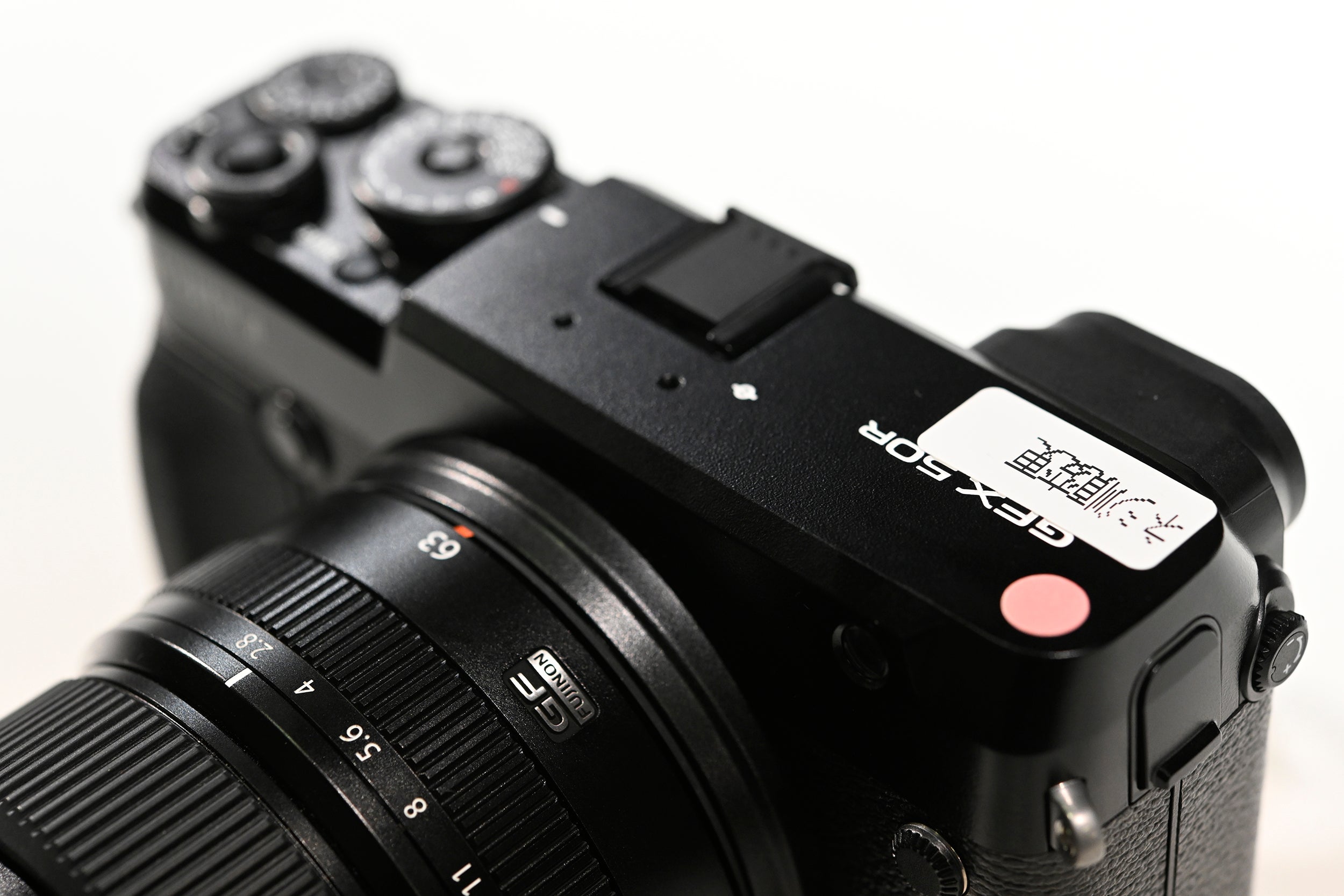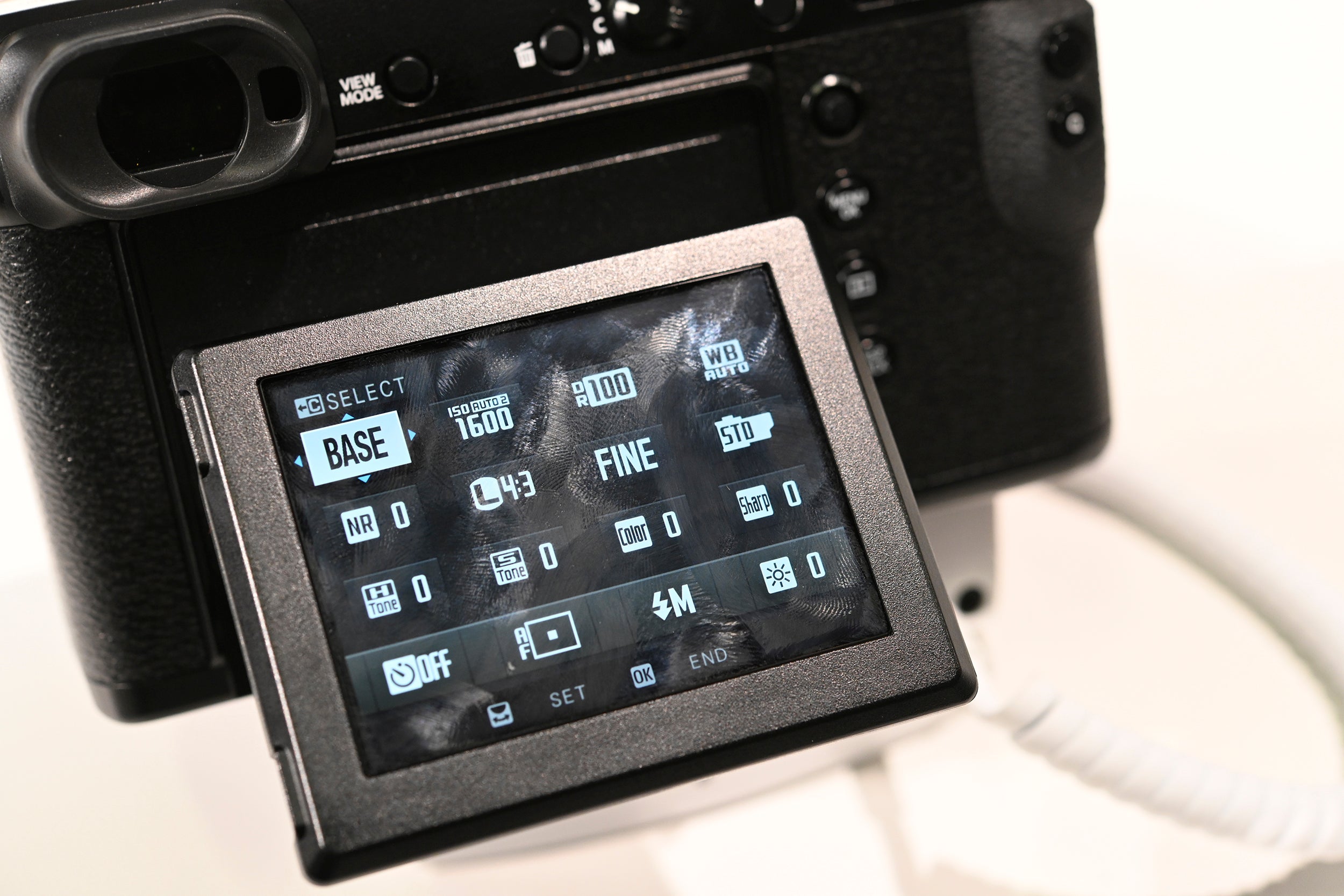Fujifilm GFX 50R First Look
What is the Fujifilm GFX 50R?
The GFX 50R is the latest addition to Fujifilm’s GFX family, its range of medium format cameras for professional landscape, wildlife, portrait and documentary photographers.
What’s ‘medium format’? While we’ve heard a lot about ‘full-frame’ cameras from the likes of Nikon, Canon and Panasonic, recently, medium format cameras have even bigger sensors than full-frame. This has led Fujifilm to slightly cheekily call its GFX cameras ‘super full frame’.
The 51.4-megapixel GFX 50R’s big selling point is that it’s small for a medium format camera and adopts a ‘rangefinder’ style (hence the ‘R’ in its name). It’s not as compact as Fujifilm’s X Series cameras, which use a smaller APS-C sensor, but it is significantly thinner and lighter than its older brother, the Fujifilm GFX 50S.

Fujifilm has said that the X series and GFX series are designed to cater to two very different types of photographer. The former are small, light and fast, while the GFX cameras are heavier, bigger, and not quite so fast.
It’s also pointed out that there’s no in-between with its cameras – you either go small and light for ultimate portability, or you go big and heavy for ultimate high image quality.
That said, the GFX 50R is designed in a flatter, ‘rangefinder’ style. That means the viewfinder is shunted along to the far left of the body, allowing you to use one eye to compose your image, and your other to check out any subjects that might be coming into view.
This makes it particularly nifty for news and documentary photographers, or indeed anybody that is working in fairly quick moving situations.
Fujifilm GFX 50R – Design and handling
Although the GFX 50R is by no means small, considering it’s housing an enormous (by other standards) sensor, it’s actually remarkably light and portable.
In fact, it weighs 145g less than the GFX 50S, as well as being 25mm thinner. In the hand it feels comfortable to use thanks to a sturdy grip, and certainly no more cumbersome than a traditional DSLR type setup.
So far we’ve had limited time with the GFX 50R, but it feels like something that you could stand to use all day without getting too much of a wrist-ache or backache. That’s especially the case if you pair it with the new GF 50mm f/3.5 lens which is coming soon – indeed, pair these two together and you’ve got the world’s lightest medium-format camera combination.
We’ve had a go with it with the 63mm f/2.8 (which gives you an equivalent focal length of 50mm in 35mm terms), and it still didn’t feel too heavy or awkward in the hand.
Shifting the viewfinder to the left is the ethos behind the GFX 50R’s whole design. The spec sheet reveals that the finder on the new device has a slightly reduced magnification, at 0.77x vs 0.85x, but both have 3.69-m resolution.
In use, it reveals a bright and clear view of the scene with barely any lag. You also have the advantage of being able to see a real-time display of any settings changes you need to make. If you’re a right-eye shooter, being able to keep your left eye on subjects potentially about to enter the frame is something which is very useful for street photography and something we’ll be keen to put to the test a bit more when full production samples become available – as well as checking to see if there’s a noticeable difference between the two cameras.
The viewfinder is joined by a tilting touch-sensitive screen. Another difference here from the GFX 50S is that the 50R’s screen only tilts up and down, while the former camera’s screen tilts in three directions. You can use the screen to move the focus point around the frame, but if you prefer the tactility of physical buttons, there’s also a handy Focus Lever which allows you to move the point to the area that you require.
On the top of the camera you’ve got the same dials and buttons you might be used to seeing if you used one of Fujifilm’s X series cameras – so there’s a shutter speed dial and exposure compensation dial that you can rotate to the required value with ease. Aperture is adjusted via a ring on the lens itself.
A “Q” button gives you speedy access to commonly used settings that you might want to change regularly, such as film simulation mode, ISO, aspect ratio and so on. Again, this is very similar to the quick menus you can find on Fujifilm’s X series cameras.
Fujifilm GFX 50R – Features
Aside from the changes to the body design, the GFX 50R retains a lot of the features from the 50R.
There’s what appears to be the same 51.4-megapixel sensor and X-Processor Pro combination, while button layout and menus are also very similar.
The GFX 50R has been equipped with the same AF system as the GFX 50S. When we’ve used the GFX 50S in the past, it’s a noticeably more sluggish system when compared to the super-fast speeds of most modern mirrorless models.
That’s not likely to be a problem for static – or relatively static – subjects, but it’ll be interesting to see how well it copes with documentary and street style shooting where a slow focusing system could mean the difference between a fantastic shot and a missed moment.
Other useful features include a dual card slot – both are SD UHS-II compatible, so should give the best possible speeds for the format. This is not a camera designed for super-fast shooting, but the secondary memory card slot is useful for backup.
An additional new feature for the 50R is Bluetooth connectivity. This means that you can set up an “always-on” low-powered connection for automatic transfer of your shots to a smartphone or tablet.
This isn’t really a camera aimed at videographers, but it can record Full HD at 30p for those that might require the odd video or two.
Fujifilm GFX 50R – Early Verdict
Fujifilm is very proud of its GFX series – and when you see the quality of its images, it’s easy to see why.
It is a niche camera, thanks both to its particular handling quirks and high asking price (although at $4,500, the 50R is cheaper than the 50S). Those who love medium format photography will no doubt be positively drooling over the GFX 50R, and it certainly makes for an interesting alternative proposition in the sea of full-frame bodies currently on offer.
We have every faith that the image quality will be fantastic, but it’ll be great to see how the design tweaks have an impact on handling – stay tuned for a full review before it arrives in November 2018.
The post Fujifilm GFX 50R First Look appeared first on Trusted Reviews.







No comments